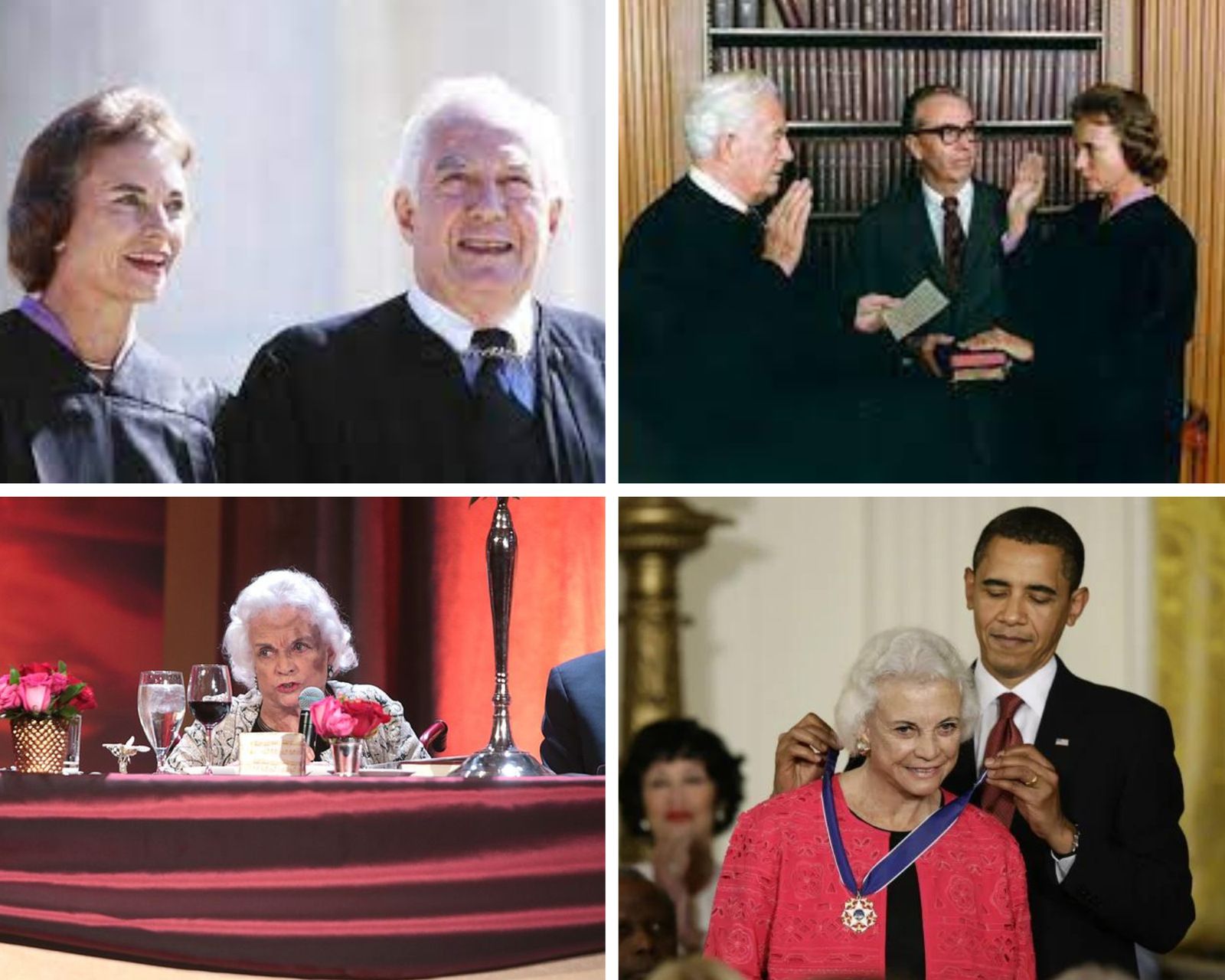Sandra Day O’Connor, the First Woman Justice on the Supreme Court.
Sandra Day O’Connor is a trailblazing figure in American legal history, renowned for shattering barriers and making an enduring impact as the first female Supreme Court justice.
Born on March 26, 1930, in El Paso, Texas, to Harry Alfred (D.A.) and Ada Mae (M.O.) Day, her remarkable rise from a cattle ranch upbringing to the highest court in the land stands as a testament to her exceptional intellect, unwavering determination, and unwavering pursuit of excellence.
Early Life and Education:
Growing up on the Lazy B cattle ranch in southeastern Arizona instilled in Sandra Day O’Connor the values of hard work and resourcefulness. Despite limited educational opportunities in the area, her parents ensured she received a top-notch education.
She attended schools in El Paso, living with her grandmother during the school year and spending summers at the ranch. Her intellectual prowess became evident early on as she graduated from high school at just sixteen years old.
O’Connor pursued her father’s unfulfilled dream by gaining admission to Stanford University. Excelling academically, she earned a BA in Economics in 1950 before later obtaining her LLB from Stanford Law School in 1952. Her academic achievements were exceptional; she ranked among the top students in her class and served on the board of editors for the Stanford Law Review.

| Aspect | Details |
| Born | March 26, 1930 in El Paso, Texas |
| Parents | Harry Alfred (“D.A.”) (1898-1984) and Ada Mae (“M.O.”) Day (1904-1989) |
| Siblings | Alan Day (1939- ), Ann Day (1938-2016) |
| Education | Stanford University (BA Economics, 1950) Stanford Law School (LLB, 1952) |
| Spouse | John Jay O’Connor III (1930-2009, married 1952) |
| Children | Scott O’Connor (1957- ), Brian O’Connor (1960- ), Jay O’Connor (1962-) |
| Nominated to Supreme Court by | President Ronald Reagan |
| Sworn in as justice on | September 25, 1981 (Sandra Day O’Connor Day) |
| Years served on Supreme Court | 1981-2006 |
| Key Achievements | -First female Supreme Court justice- First female majority leader of any state legislative upper house |
| Legacy | Founded Sandra Day O’Connor Institute in 2009 |
Career Trajectory:
Confronting gender biases within the legal profession, O’Connor initially faced challenges securing a law job and worked as a deputy county attorney in San Mateo, California.
Her marriage to John Jay O’Connor III led them to Germany, where she continued pursuing her legal career. Upon returning to the United States, they settled in Arizona where Sandra balanced raising their three sons with community service and an active role in local politics.
Her journey through Arizona’s legal and political landscape saw her serve as an assistant attorney general, state senator, and ultimately as a judge across various capacities—making history as the first female majority leader within any state legislative upper house.

Achievements of Sandra Day O’Connor
| Achievement | Significance |
| First female Supreme Court justice | Broke gender barriers, making history as the first woman to serve on the U.S. Supreme Court |
| First female majority leader of any state legislative upper house | Pioneered gender equality in politics, becoming a trailblazer in state legislative leadership |
| Founder of Sandra Day O’Connor Institute (2009) | Established an institution advancing civil discourse, civic engagement, and civics education |
| Advocate for civil rights and gender equality | Contributed significantly to legal decisions shaping civil rights and gender equality issues |
| Distinguished legal career in Arizona’s judiciary | Served in various roles including assistant attorney general, state senator, and judge |
Supreme Court Appointment and Impactful Tenure:
In 1981 President Ronald Reagan nominated Sandra Day O’Connor to serve on the United States Supreme Court—marking history as its first female justice. Her confirmation by the Senate was resounding—an instrumental moment within our nation’s legal history.
During her 25-year tenure on the Supreme Court, O’Connor made significant contributions known for independent thinking pivotal role key decisions. Her impact extended beyond judgments shaping discourse around gender equality representation law.
Legacy Beyond Retiring 2006, Sandra Day O’Connor’s legacy endures through groundbreaking career inspiring future generations. Her commitment civic engagement civil discourse led establish Sandra Day O’Connor Institute continuing mission advance education dialogue.
Sandra Day O’Connor, a key figure in American law, passed away on December 1, 2023. At 93 years old, she died peacefully in Phoenix due to complications from dementia and a respiratory disease.
Her life was filled with notable contributions to justice and civil education that significantly shaped the country.
Chief Justice John Roberts expressed his admiration for her strong and independent defense of legal principles in a touching public statement. He praised her dedication to justice and her support for civil education.
Larry Kramer, who heads iCivics, spoke highly of O’Connor’s exceptional kindness and generosity. He emphasized O’Connor’s crucial role in the creation of iCivics as proof of her commitment to promoting civic involvement and learning. The existence of iCivics symbolizes O’Connor’s vision and dedication to enhancing civic dialogue and comprehension.
Throughout her distinguished career, Sandra Day O’Connor received numerous awards that acknowledged her pioneering work and relentless endeavors in law. Her influence goes beyond her time on the Supreme Court; it has left a lasting impression on American society.
As people across the nation grieve over Sandra Day O’Connor’s death, they also celebrate her legacy as an influential advocate for justice and civil education that will motivate future generations.
